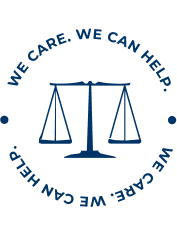The latest research and data provided by the Centers for Disease Control and Prevention (CDC) reveal that falls, being struck by an object and auto collisions are the leading cause of Traumatic Brain Injuries (TBI) in the United States. These type of injuries do not only have the potential to effect the patients memory, movement, sensation and emotional functioning, their families can also experience lasting effects.
In 2013, TBI was the diagnosis in more than 282,000 hospitalizations and 2.5 million emergency room visits.
Treating a Mild TBI
Most mild TBIs will only require plenty of rest for the patient. Although this seems simple, it is important to follow the healthcare provider’s instructions for complete rest. Additionally, doctors will recommend when it is best to return to normal activities. In fact, patients who return to normal activities prior to their healthcare providers recommendations may experience TBI symptoms all over again. This can lead to prolonging the healing and recovery process.
Initial treatment of a traumatic brain injury
The initial treatment of traumatic brain injury has the purpose of stabilizing the patient immediately following their injury. As soon as the patient arrives at the hospital with a TBI, initial treatment will take place. After the patient is stabilized, they are transferred to a specialized trauma care unit where care will be provided by the critical care nursing staff. The trauma center is usually located within the emergency department. The nurses will assess and monitor body functions, monitor the patient for signs of pain and infection and respond to any life-threatening changes.
A variety of diagnostic tests will be conducted to determine what is taking place internally after the injury. X-rays, CT scans and MRI’s of the brain will be used to help determine where the damage has been done and if there is any bleeding, swelling or skull fractures.
Imaging of the cervical spine may be completed to out rule any neck or spine injuries. Often times when someone suffers a traumatic brain injury, the neck and spine are also impacted.
Is surgical treatment necessary after a TBI?
The overall goal of surgical traumatic brain injury treatment is to prevent secondary injury by maintaining blood flow and oxygen to the brain as well as helping minimize swelling and pressure.
Surgery does not correct the problem in a closed head injury. However, if mechanical ventilation to support breathing and help keep the pressure down in the patient’s head, it may be required for a device to be surgically placed in the brain cavity to monitor and help control intracranial pressure. If bleeding is occurring in the skull cavity, it may be drained and bleeding vessels or tissue may need repairing.
Open-head injury skull fractures often require surgery to repair the injury. In addition, surgeons may remove damaged tissue.
Removing clotted blood. Hematomas, large areas of clotted blood may form due to the bleeding in the brain or between the brain and skull. This would cause pressure on the brain and damaged brain tissue.
Repairing skull fractures. Removing pieces of the skull and other debris from the brain will help start the healing process of the skull and surrounding tissues.
Emotional treatment following a TBI
TBIs can cause the patient to ride an emotional rollercoaster. They may seem moody or have outbursts unexpectedly. Not only will the patient need emotional treatment, the patient’s family will also need guidance and support on how to cope with their loved one’s personality changes.
Most trauma centers have a psychologist on their team who will help the patient and the patient’s family with counseling and education about the injury and assist with decision making during a crisis. Besides preparing the patient and their family emotionally to face the likely struggles that will arise at home, the psychologist will also assess the cognition of the patient.
Many patients will proceed to a rehabilitation facility following care at a trauma center.
What happens in rehabilitation?
Many TBI patients will attend Rehabilitative Care Center Treatment where they will receive help with restoring their daily life.
The goals of rehabilitation are to:
Stabilize the medical and rehabilitation issues related to the brain injury.
Prevent secondary complications such as pressure sores, pneumonia and contractures.
Restore lost functional abilities including limited ability to move, use the restroom, talk eat and think.
Enhance functional independence with adaptive devices.
The staff caring for the patient will analyze what changes may be required when the patient goes home.
The patient will participate in therapy daily with the guidance of a physical therapist. These experts will assess the patient’s:
Balance
Posture
Strength
The need for a walking aid
Quality of movement
Spontaneous movement
Coordination of movement
Increased sensation of sensory-motor activities
Pain management
An occupational therapist will also work alongside the patient to help determine the best ways to perform daily living skills such as bathing, dressing and personal hygiene. The patient’s functions and potential complications related to the movement of upper extremities, daily living skills, cognition, vision and perception will be assessed by the occupational therapist.
Medications used for Traumatic Brain Injury treatment
Medications are used to treat the symptoms of TBI as well as to lower some of the risks associated with the injury. Some examples of medications used for TBIs are:
Anti-anxiety medication lessens feelings of fear and nervousness.
Anticoagulants are used to prevent blood clots.
Anticonvulsants are used to prevent seizures.
Antidepressants treat symptoms of depression and mood instability.
Muscle relaxants help reduce muscle spasms.
Stimulants to increase alertness and attention.
Recovery from a Traumatic Brain Injury
It is impossible to place a timeframe on the recovery of a TBI because no two people are exactly alike making each brain injury unique. The recovery is going to vary based on the individual and the brain injury. For example, patients over the age of 60 and under the age of two have a more difficult time recovering than someone who suffered the same type of injury in a different age group. Recovery from a traumatic brain injury may take months, years and for some it will be a lifetime of recovery.
How The Carlson Law Firm can help
If you or a loved one suffered a TBI because of the negligence of another, don’t go another moment without speaking to a qualified Traumatic Brain Injury Lawyer. The Carlson Law Firm has a team of compassionate attorneys, on staff nurses and private investigators ready to heavily invest in your case to help prove fault. Your well-being is top priority and we will ensure you receive the appropriate medical attention. We will use every resource necessary to fight for maximum compensation on your behalf. Contact us today for a free consultation. We care, we can help.





